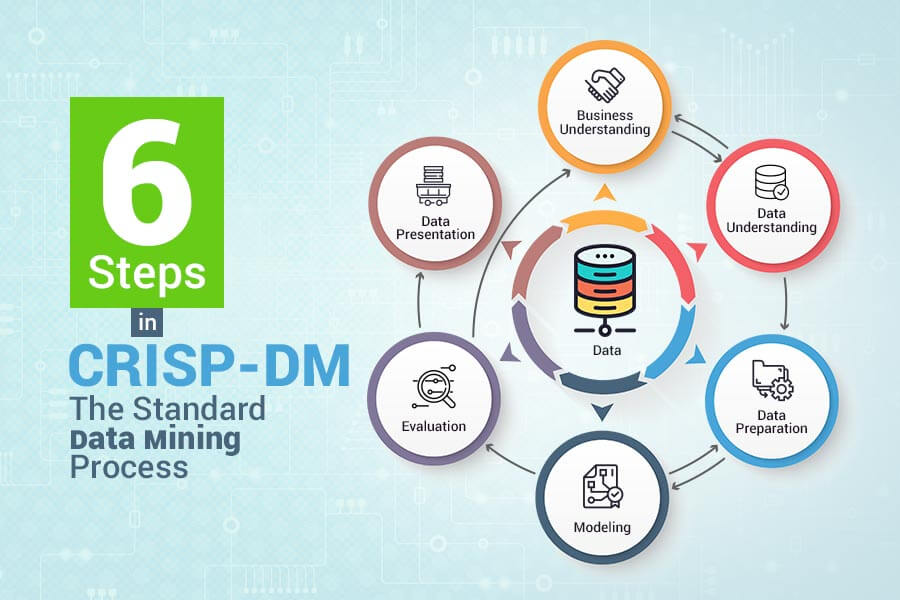CRISP-DM (Cross-Industry Standard Process for Data Mining) has been witnessing exponential growth for quite a few years now. It is one of the common methodologies used by industries and organizations to solve the existing data mining issues. Apart from data mining, it has also proved to be beneficial to resolve issues for data science and analytics projects.

Data mining process diagram
Data mining, because of many reasons, is really promising. The process helps companies to convert raw information into useful data. It works by scrutinizing information from different databases and closely understanding the customer to create effective marketing strategies. Some of the data mining techniques used are AI (Artificial intelligence), machine learning, and statistical.
Even though the technology is promising, certain issues may arise restricting the delivery of the highest quality data outcomes. This is where CRISP-DM comes in. Keep reading the article to understand the concept in detail. You will also learn the 6 major steps that are used in the process.
What is CRISP-DM?
Cross-Industry Standard Process for Data Mining (CRISP-DM) is a process model describing the life cycle of data science. In short, it guides you through the entire phases of planning, organizing, and implementing your data mining project.
Why is Crisp-DM Important?
Here are the three basic reasons why the CRISP-DM process is important.
-
Flexibility:
It is flexible enough to improve hypotheses and data analysis regularly during iterations.
-
Functionality:
With the CRISP-DM approach, you can create functional templates for effective DS management.
-
Strategy:
It allows you to develop a long-term strategy by obtaining additional insights and information based on the short iteration at the project’s beginning.
6 Major Steps involved in the CRISP-DM Methodology
Among the various processes, CRISP-DM is one of the most reliable and user-friendly is the CRISP-DM technique. This is what most of the professional service providers also prefer. Let us see the six steps involved in it.
-
Understanding the business
Firstly an in-depth analysis of the business objectives and needs has to be done. Current situation must be accessed and from these insights, the goals of carrying out the processes must be defined. This should follow the setting up of a plan to proceed.
-
Understanding the data
Initial facts and figures collection are done from all available sources. Then the properties of data acquired is examined. Then the quality of information is verified by answers to certain relevant questions concerning the completeness and accuracy of the material.
-
Preparation of data
This has to be carried out very carefully and a typical data mining company understands it. After the sources are completely identified, proper selection, cleansing, constructing and formatting is done. Exploration of information may be executed for noticing the patterns in light of business understandings.
-
Modelling
Selection of modelling technique is the very first step to take followed by the generation of test scenario for validating the model’s quality. After that few more models are generated. All the models are then assessed to make sure that they fall in line with the business initiatives.
-
Evaluation
Here the results of models are evaluated in the backdrop of business intentions. Then new objectives may sprout up owing to the new patterns discovered. This is, in fact, an iterative process and the decision whether to consider them or not has to be made in this step before moving on to the final phase.
-
Setting out
The final information gathered has to be presented in a usable manner to the stakeholders. This has to be done as per their expectations and business requirements. The process may be simple or complex depending on numerable factors.
Currently, CRISP-DM has become the standard process model for all data mining activities. So, make the best use of the information given here to ensure increased efficiencies and success rates for your projects.
The effectiveness of any data mining project can be only achieved by accurately setting expectations and estimation. To ensure this, you can seek assistance from professional companies offering data mining services. Also, try selecting the best one to make sure that your needs are addressed properly.

